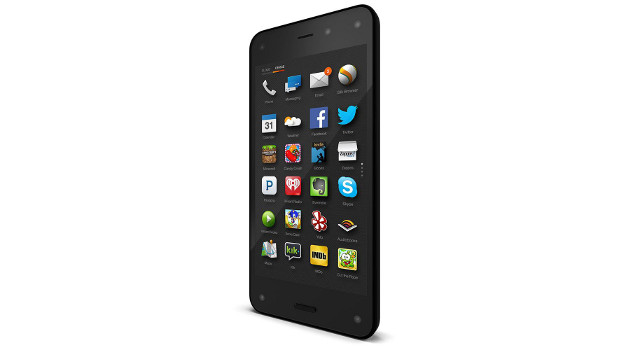One would be forgiven for thinking Amazon CEO Jeff Bezos wants to compete with other phone makers with his company’s new Fire smart phone. But forget the multiple cameras and pretty 3D-like effects, the device is really about selling more stuff.
The Fire comes with close ties to Amazon’s online retail store, relies on the company’s cloud storage and is a platform for Amazon’s digital content in the areas of music, video, books and apps.
“The goal is to drive traffic and spending within Amazon’s core services,” said Ben Bajarin of Creative Strategies, who studies the consumer technology industry.
One of its key features is an image recognition technology called Firefly, which recognises images, text and audio to quickly identify product bar codes, movies, songs, TV episodes and other products for instant purchasing through Amazon.
The company clearly hopes it will be huge. There is a dedicated button for it on the phone, which could make impulse shopping easier. Amazon is offering support to developers so they can build third-party apps around Firefly. Walk into a shoe store, open a running app on Fire, and perhaps you could earn a deal on some sneakers.
The phone could also spur adoption of its cloud services. As a start, Amazon is offering unlimited photo storage with Amazon Cloud Drive.
Service oriented
“It’s a service-oriented device,” said Tuong Nguyen, an industry analyst with Gartner.
But the company’s first smart phone could be a tough sell to iOS and Android loyalists. The unit’s operating system is a forked version of Android focused on Amazon’s own native apps, which is likely to turn off people who are not already Amazon die-hards.
To help attract users, Bezos said that Fire purchasers would get one free year of Amazon Prime for a limited time. The $99 (€73) service provides free two-day shipping and exclusive access to movies, music and Kindle books.
Even if the phone is just a moderate success, Amazon also stands to build an even stronger set of data around people’s shopping habits, especially based on their location.
“This is an attempt to do something innovative around shopping and e-commerce,” said Creative’s Bajarin. Even if Amazon just sells a couple million phones, Fire could give the company better data about people’s shopping habits that could later be used to evolve Amazon’s service, on mobile or the desktop, he said.
But with Apple and Google collecting their own data, the competition is fierce.
All about the apps
Many of the most popular mobile apps look set to be available on the Fire phone when it launches on 25 July.
The company said that versions of Twitter, Facebook, Pandora, Skype, Dropbox, Instagram, Yahoo, Uber and Yelp are among those being developed for Fire. The phone runs on a modified version of Google’s Android OS and relies on the Amazon Appstore – something that means the full catalogue of Android apps will not be available to users.
But with the announcement, which came hours after the initial Fire announcement, Amazon is apparently trying to avoid the problems experienced by Microsoft and BlackBerry, which faced criticism and bad publicity when they launched new phone platforms with major apps missing.
Amazon is giving mobile developers a month to prepare and submit their apps if they want them included in the Amazon Appstore on launch day. The company that apps submitted by 18 July will make it into the Appstore for 25 July.
“Fire is based on Android so if an app runs on Android it can run on Fire with little to no work,” according to Amazon.
Others in development for Fire include Candy Crush, Chase banking, iHeartRadio, Flixster, MapQuest, Mint.com, NBC News, Orbitz, Pinterest, Snowspin, Stage Dive Legends, SquareHub, StubHub, Terreria, The Walking Dead, USA Today, The Washington Post, wine app Vivino, WebMD, WhatsApp and Zillow.
Dev apps
It should be noted that the development work on an app does not guarantee it will be available, but Amazon is expressing confidence that they will be.
Amazon also published software development kits (SDKs) that will allow developers to access two of the Fire phone’s key technologies for their apps: Firefly, which recognises items in the real world, and Dynamic Perspective, which adds peek, tilt and zoom effects to the screen.
Amazon said Zillow, a real-estate listings app, is using the dynamic perspective SDK to allow users to “use their head to zoom in on a bedroom or peek to see what’s around the kitchen corner.” The system utilises cameras on the front of the phone that track the user’s head and allow the display to be adjusted depending on that head movement.
Zach Miners and Martyn WIlliams, IDG News Service








Subscribers 0
Fans 0
Followers 0
Followers